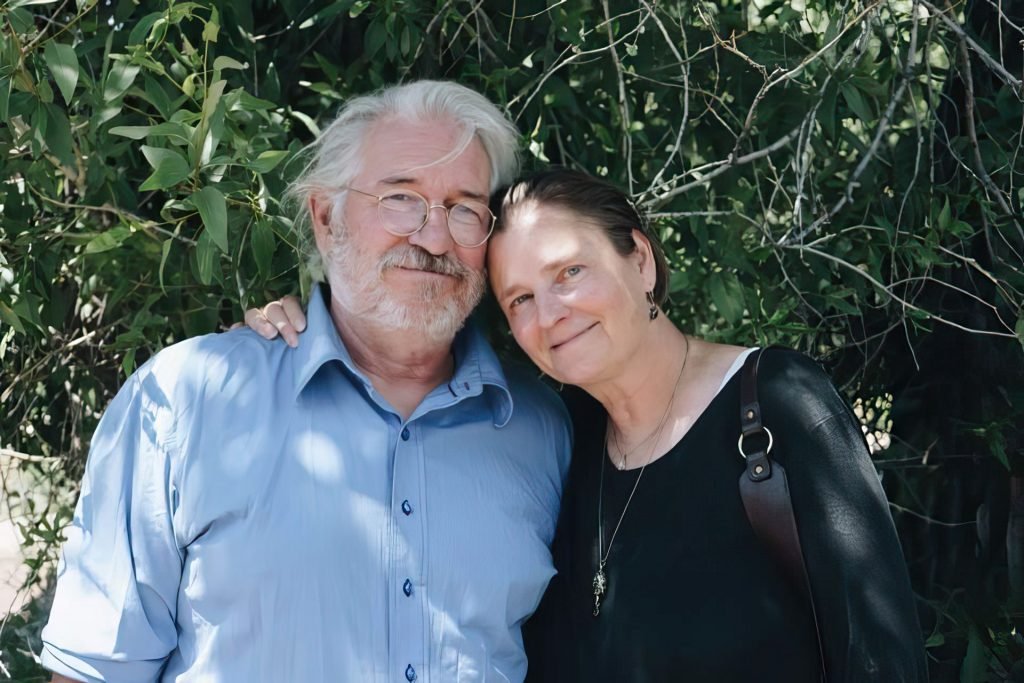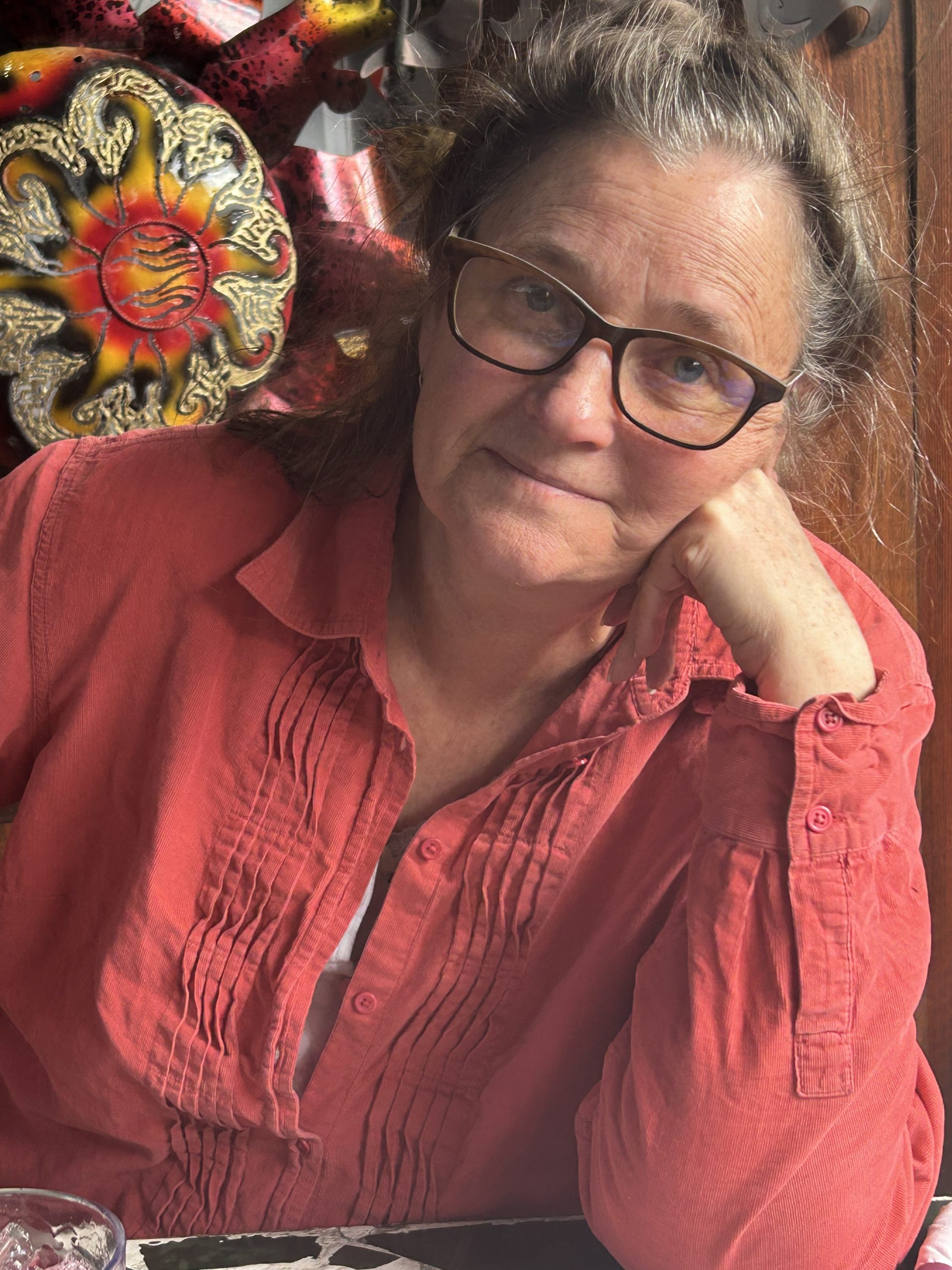By Anya Kaats.
Early one morning at The Bistro, the restaurant most recently known as the Desert Sage, Christine Canaly was baking loaves of sourdough bread to distribute to retailers throughout the San Luis Valley. It was 1989, and Christine, better known as Chris, was in her early 30s, having recently moved to Crestone and taken over her friend Margot Williams’s bread business.
On this particular morning, a young man walked in whom Chris didn’t recognize, and they got to talking. “I’m Alex Crutchfield,” he said. “I’m the vice president of American Water Development and we just applied in water court to export water from this valley to the Front Range, where it’s more valuable!” Chris was stunned. “The best part is that people like you get to sit on a board and figure out how we’re going to spend all that money!” he exclaimed. Chris responded unequivocally: “That is the most horrible idea I could possibly imagine.” Although Chris hadn’t recognized Crutchfield at first, she was well aware of the proposal that had been submitted by American Water Development to export 200,000 acre-feet of water annually (equivalent to 54 billion gallons) from the Valley to the front range. The proposal had stated the water was going to be used for farming in the Valley, but Crutchfield’s remarks confirmed that this was a lie.
A year earlier, when Chris first arrived in Crestone with her husband Mark Jacobi, she’d met John Milton, founder of Way of Nature, which was known then as Nature Quest. John told her about the vision quests he led, and to celebrate her 30th birthday, Chris decided to spend a week alone in nature. “This experience was huge for me,” Chris explained. “I grew up in a crowded household, and felt constantly bombarded. To be alone like that was profound, and the experience made me realize that I wanted to devote my life to protecting the environment.” While Alex Crutchfield dismissed Chris’ concerns and walked away unphased, their early morning conversation in The Bistro marked the beginning of Chris’ decades-long commitment to protecting the land and ecosystems of the San Luis Valley.

After her conversation with Crutchfield, Chris immediately jumped in her VW Rabbit hatchback and drove to Greg Gosar’s 800-acre regenerative ranch in Monte Vista, which is where she procured organic flour for her bread. After sharing the story about her conversation with Crutchfield, she and Greg decided that something had to be done. Not long after, they helped launch Citizens for San Luis Valley Water and started spreading the word, first locally, then around the state of Colorado. Eventually, the story was printed in the Los Angeles Times, Chicago Times, New York Times, and the BBC. “It was this David and Goliath story,” Chris explained. “There’s this illusion that in this valley things will just work themselves out, and in some ways that’s true, but it took a lot of consistent work over the course of a decade for us to educate people about the extent of what was at risk.”
Ultimately, Citizens for San Luis Valley Water was successful in stopping the American Water Development’s scheme. Since then, Chris, with the help of the San Luis Valley Ecosystem Council (SLVEC), which she’s run for the past 23 years, has been instrumental in thwarting similar exportation proposals, like the recent Douglas County proposal that had planned to export 23,000 acre-feet of water annually (equivalent to 7.5 billion gallons), from the Valley to the Front Range. Beyond water conservation, Chris and the SLVEC have a list of accomplishments so long and varied that it’s impossible not to be impressed. As a newcomer in town, I had heard about these ecological and environmental success stories but I had no idea how many of them led back to Chris Canaly.
One might assume that a woman who has lived in Crestone for over 30 years, and who has dedicated her life to protecting the San Luis Valley ecosystem, would be cautious and averse to change, but this couldn’t be farther from the truth. “People always ask me if I miss the days when there were only 30 couples living here, but I don’t think comparing that time to now makes any sense,” Chris explained. “Change is inevitable, no matter where you are,” she continued. “To me, the more interesting question is about how we prepare for the change, and about how we can embrace the people who move here, educate them about what’s happening, and help them understand what this place is all about.” For Chris, change isn’t something to resist or be fearful of, so long as it’s approached with intention and an open mind.
Chris expanded on this by saying she holds new people in town to the same standards to which she held herself when she first moved here in the late 1980s. “The only thing I find offensive is people who come here and immediately decide they’re going to take over. I would prefer that people wait and listen first before assuming they know how they can add value to the community.”
Above all else, Chris says that she has committed her life and work to the practice of curiosity and learning, and is consistently blown away by what can happen when people come together and are open to what is possible. Whether we’re talking about the ecosystem or about community, change is fundamental to the animate nature of life, she said. “Experimentation and openness are essential. Life is a mystery to be lived, not a problem to be solved.”


